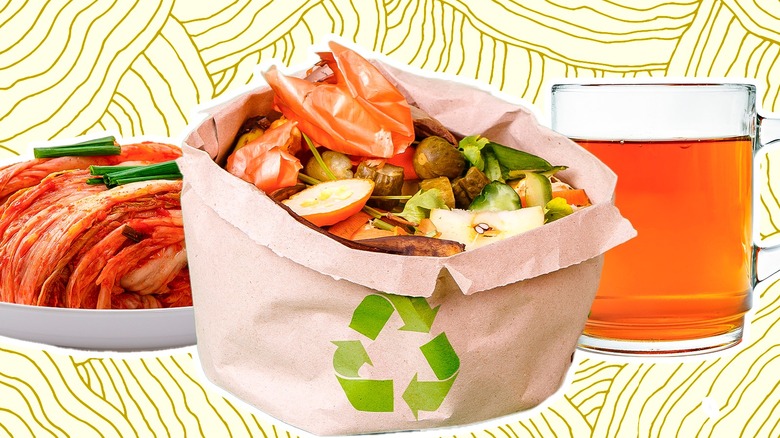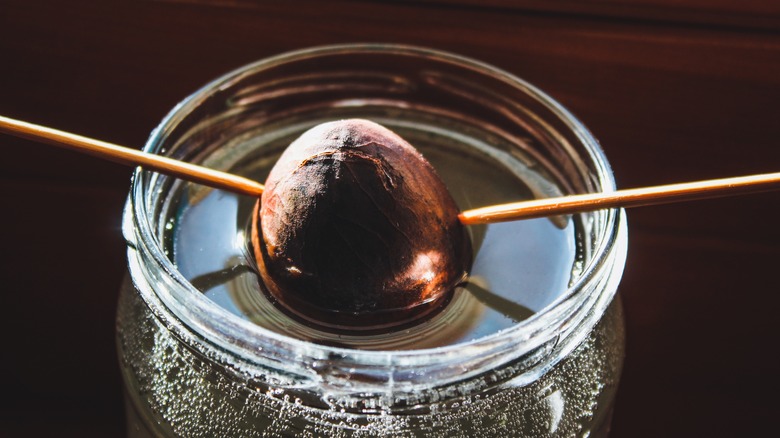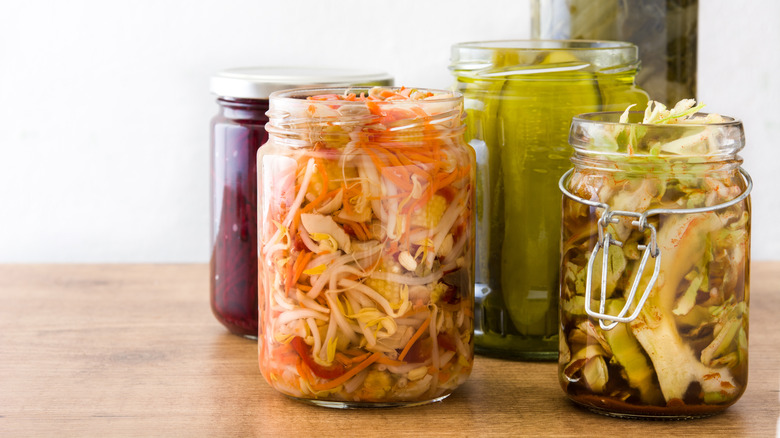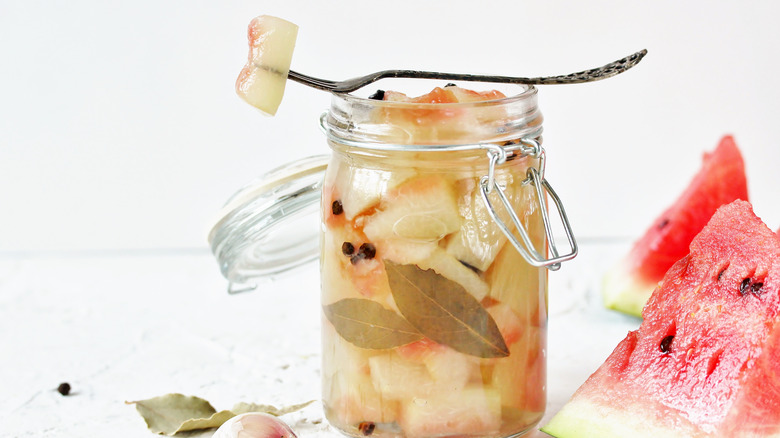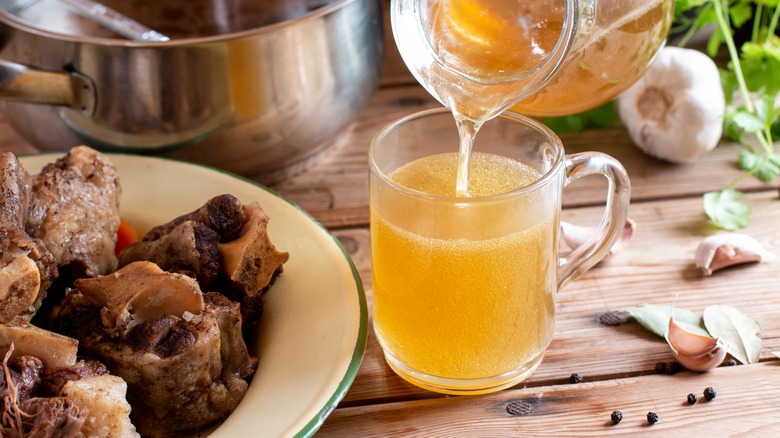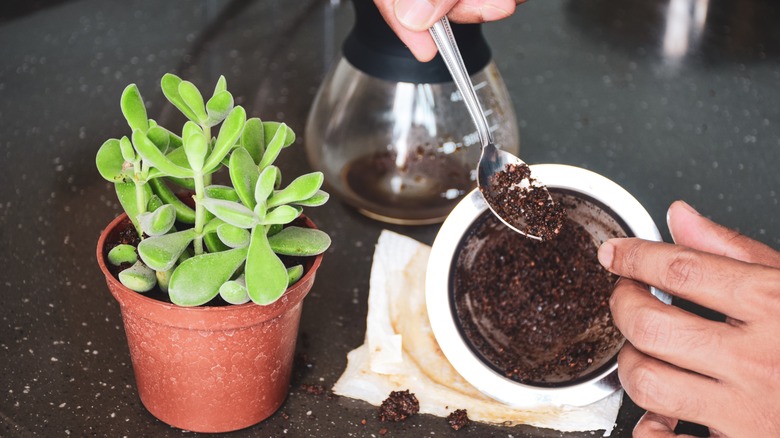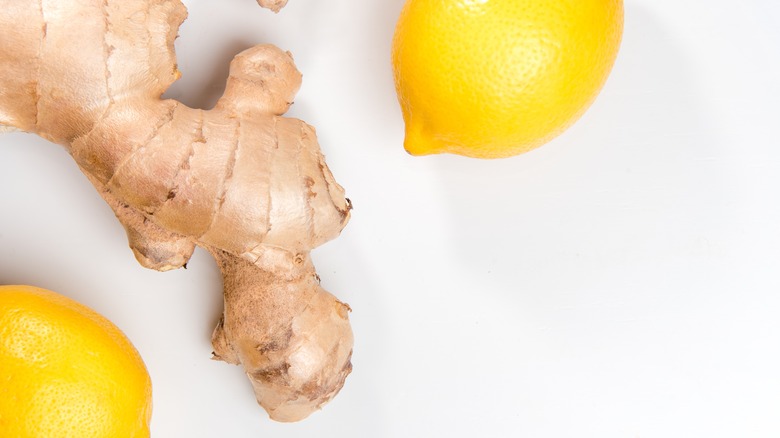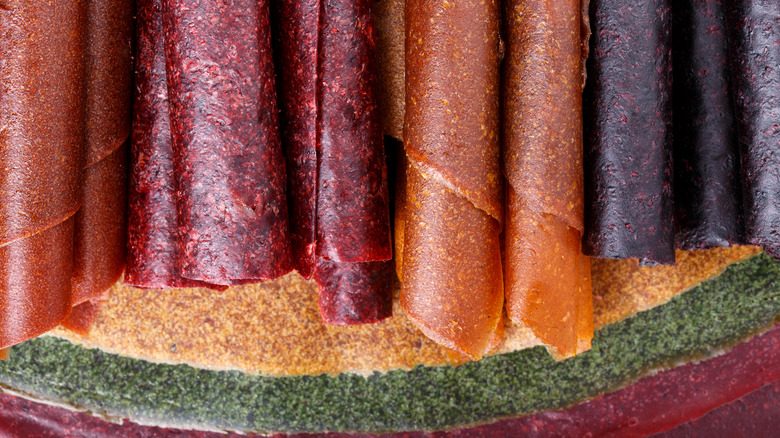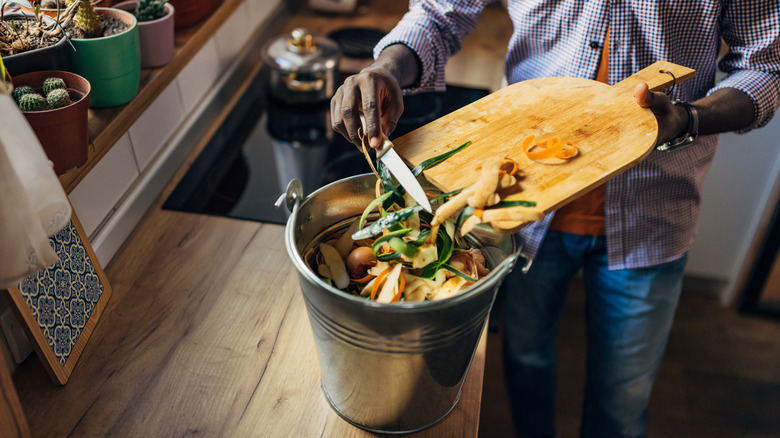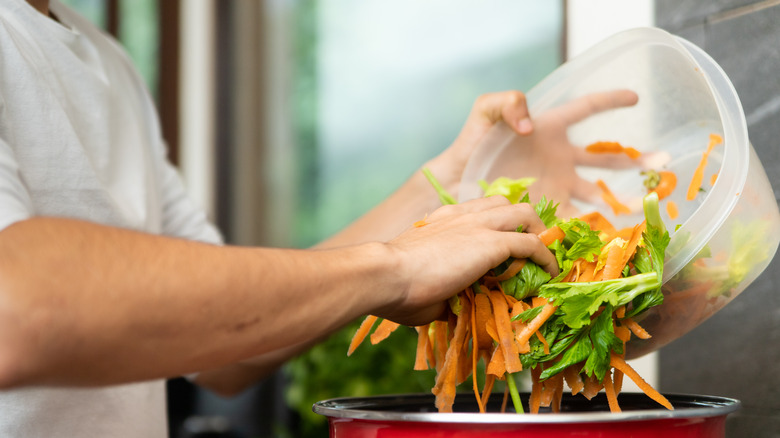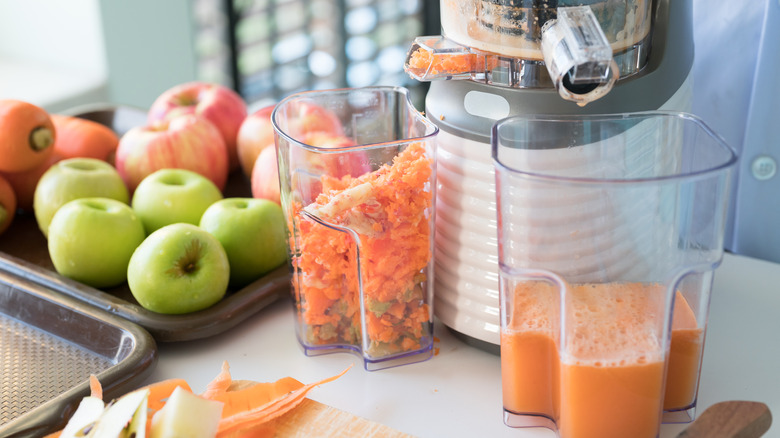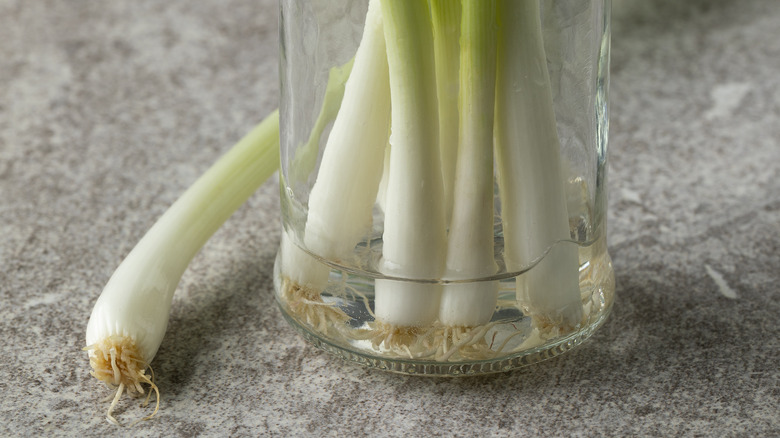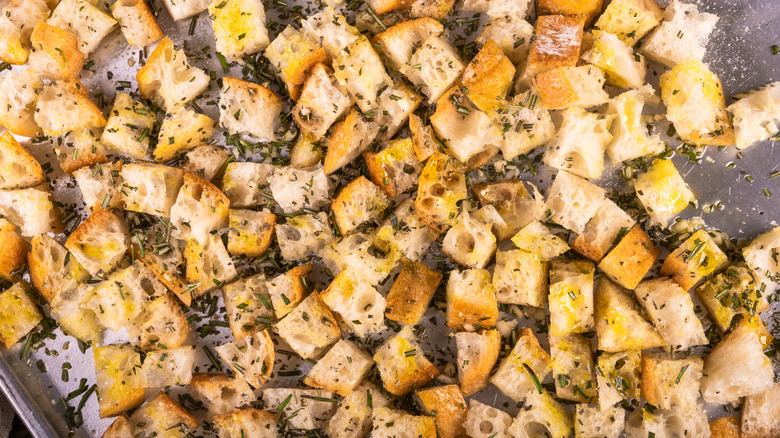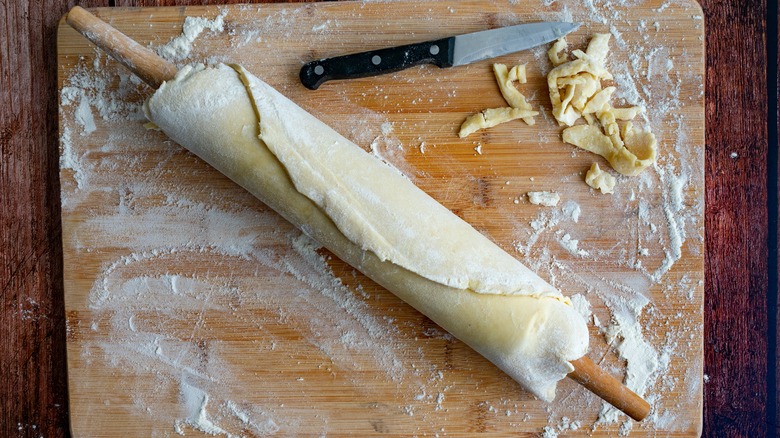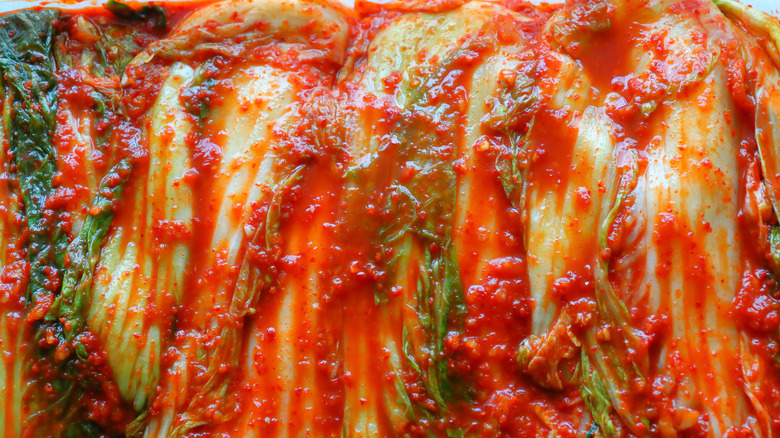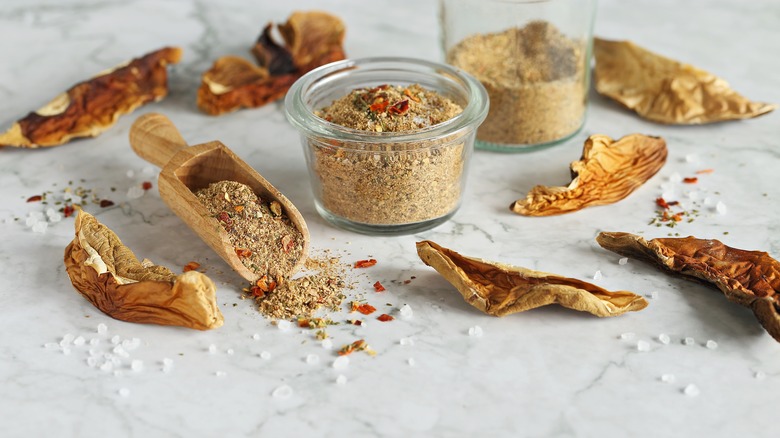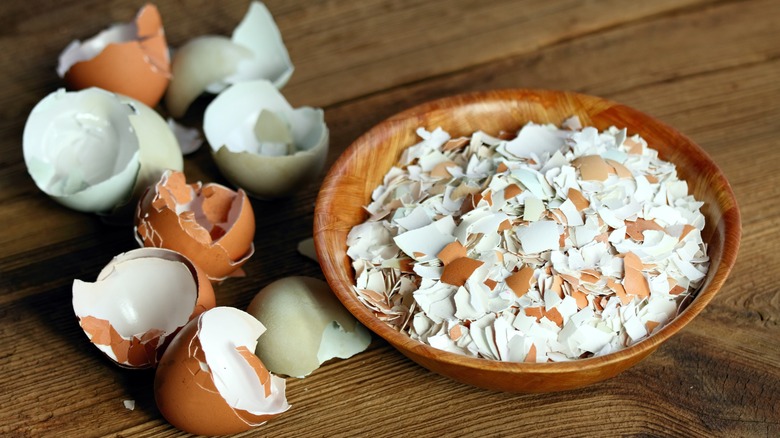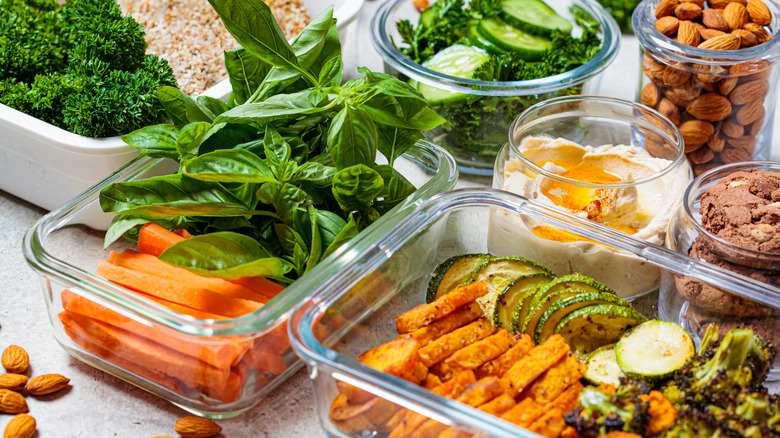17 Ways You Can Repurpose Kitchen Scraps To Reduce Food Waste
Reducing food waste is crucial, not only for saving money but also for minimizing our environmental impact. Every bit of food waste contributes to landfill overflow and greenhouse gas emissions, so making small changes at home can have a significant positive effect. In this guide, I'll explore a variety of strategies to help you reduce food waste and make the most of your groceries.
From fermenting woody stalks and stems to making pest repellent from eggshells, these tips cover a wide range of practical solutions, even to issues beyond food waste. You'll learn how to pickle watermelon rinds, save meat scraps and bones for stock, and even brew ginger and lemon peels into tea.
As a home cook and former professional chef who worked in several zero- or near-zero-waste kitchens, reducing food waste was always a priority for both food-cost reasons and environmental sustainability. I've picked up a few tips and tricks along the way, and I'm excited to share them with you. Let's dive in and discover how you can transform your kitchen practices to be more sustainable and efficient.
Germinate avocado pits and other seeds
Germinating avocado pits and other fruit seeds is a rewarding way to reduce food waste and grow your own plants. Instead of discarding avocado pits, you can sprout them and eventually grow an avocado tree. To germinate an avocado pit, rinse it thoroughly and insert toothpicks around the middle. Suspend the pit over a glass of water, making sure the bottom half is submerged and stays that way. Place the glass in a sunny spot and change the water regularly. Within a few weeks, the pit should sprout roots and a stem.
Similarly, you can germinate seeds from other fruits like citrus, apples, and mangoes. All that's required is cleaning the seeds, letting them dry, and planting them in soil. Keep the soil moist and provide plenty of sunlight. Watching these seeds grow into plants is not only satisfying, but also a great way to repurpose food scraps.
Ferment woody stalks and stems
Woody stalks and stems, such as broccoli or kale stems, often end up in the trash — but similarly to how you can lacto-ferment fruits and vegetables, these hardy scraps can also be transformed into delicious snacks through lacto-fermentation. Fermenting these parts of vegetables not only allows you to use all of your produce, but also enhances nutritional value by adding probiotics.
The process is simple: fill a jar with a brine solution of salt in filtered water, slice the stalks and stems thinly, and pack them into the jar with a weighted lid to keep the scraps submerged in the brine. Leave the jar in a shaded area at room temperature for a week or so, tasting periodically until you reach your desired flavor. The longer you leave them, the more funky and sour they'll be. Fermented stalks and stems make a tangy and crunchy addition to salads, sandwiches, or as a standalone snack. Just remember not to use parts of veggies that have begun to rot or go soft — these don't provide good results when fermented.
Pickle watermelon rinds
Instead of tossing watermelon rinds in the trash, consider pickling them to create a refreshing and crunchy treat. Watermelon-rind pickles are a perfect example for how to turn waste into a delicious dish, and these have long been a staple snack in the food culture of the American South.
Among many ways to make a pickled watermelon rind recipe, you typically peel off the green outer skin, cut the rinds into small pieces, and soak them in a brine made of water, vinegar, sugar, and your favorite pickling spices. Let the rinds sit in the brine for at least 24 hours to absorb the flavors. These pickles can be enjoyed on their own, added to salads, or used as a tangy side dish for grilled meats. Pickling not only preserves the rinds, but also adds a unique flavor to them that can complement a variety of dishes.
Save meat scraps and bones to make stock
Collecting meat scraps and bones to make stock is a fantastic way to reduce waste and create a rich, flavorful base for soups, stews, and sauces. Instead of discarding chicken bones or beef trimmings, save them in a freezer bag until you have enough to make a stock.
To make a deeply flavorful stock from your scraps of meat and bones, combine them in a large pot with cold water, and add aromatic vegetables like onions, carrots, and celery, along with herbs and spices. Simmer the mixture for several hours over low heat to extract the flavors and nutrients. Once done, strain the liquid and store it in jars, or freeze it in portions for future use. Homemade stock is not only more flavorful and nutritious than store-bought versions, but it's also a great way to utilize every part of the ingredients you buy.
Use coffee grounds to fertilize houseplants
Don't throw away your used coffee grounds — that stuff is black gold! Repurpose them as a natural fertilizer for your houseplants. Coffee grounds are rich in nitrogen and other essential nutrients that help plants thrive.
To make this happen, simply sprinkle small amounts of coffee grounds on top of garden soil, or stir them into potting mix. This not only enriches the soil, but also improves its structure and drainage capabilities. Coffee grounds can also deter pests like slugs and snails, making them a dual-purpose addition to your plant care routine. Keep in mind that clumps of coffee grounds may become moldy if simply left on the surface, but this is just an aesthetic precaution — this blue-green fungus can be beneficial to plants. By recycling coffee grounds, you reduce waste and provide your plants with a nutritious boost, promoting healthier and more vibrant growth.
Brew ginger and lemon peels into tea
The peels of ginger and lemons are often discarded, but they can be brewed into a soothing and aromatic tea. This simple practice reduces waste and makes use of every part of these flavorful ingredients. To make the tea, collect ginger and lemon peels, rinse them thoroughly, and steep them in boiling water for at least 10 minutes. Honey helps contrast the slight bitterness of the lemon, but you can add whatever spices and herbs sound good to you — maybe turmeric, mint, cinnamon, cardamom, or clove.
The resulting brew is a refreshing beverage that can be enjoyed piping hot, or cold over ice. Ginger and lemon tea, packed full of antioxidants, is known for its properties that boost digestion and the immune system, making it a great addition to your daily routine. You might even consider making similarly nutritious tea with ginger and orange peels instead, for a milder citrus flavor.
Make fruit leather
Turn overripe fruits into homemade fruit leather, a healthy and portable snack that reduces food waste. This process is simple and fun, allowing you to enjoy the full flavor of the fruit even when it's past its prime.
While some may say that making your own fruit leather isn't worth it if you don't have a food dehydrator, there are other techniques to try. One way is to puree the fruit in a blender until smooth, spread it thinly on a baking sheet lined with parchment paper, and dry it in the oven at a low temperature. The drying process can take several hours, so check periodically until the fruit leather is firm and no longer sticky.
Once done, cut your fruit leather into strips and store it in an airtight container. Homemade fruit leather is free from preservatives and added sugars, making it a wholesome alternative to store-bought snacks.
Compost your food waste
This is probably the most well-known and antiquated method of putting your kitchen waste to good use. Composting is a fantastic way to dispose of food scraps while creating nutrient-rich soil for your garden. There are various composting methods, such as vermicomposting (using earthworms to help break down discarded food), using a composting appliance for the kitchen that dehydrates and grinds food waste, or participating in municipal food-waste pickup programs. By composting, you transform organic waste into valuable fertilizer that can enhance the health of your plants.
Start by collecting kitchen scraps like fruit and vegetable peels, eggshells, and uneaten bread, and add them to your compost bin or pile. Remember that coffee grounds can upgrade your compost pile. Turn the compost regularly to aerate it and speed up the decomposition process. Over time, the food scraps break down into rich, dark compost that can be used to enrich your garden, reduce the need for chemical fertilizers, and promote sustainable gardening practices. You can compost your used paper towels, too.
Make veggie stock
Vegetable scraps such as carrot tops, onion skins, and celery leaves can be saved and used to make vegetable stock. This is an excellent way to extract flavor and nutrients from parts that would otherwise be discarded.
To make vegetable stock, collect vegetable scraps in the freezer until you have enough to fill a pot. Add water, bay leaves, peppercorns, stems of parsley or cilantro, and any other herbs you like, and simmer for about an hour. Strain the liquid really well and store it in jars in your fridge, or freeze it for later use.
Vegetable stock can be used as a base for soups, stews, risottos, and more, providing a flavorful and nutritious addition to your recipes. By making your own stock, you reduce waste and enjoy a much tastier homemade alternative to store-bought options. There's no doubt that a good veggie stock made at home will one-up the boxed stuff any day.
Juice fruit scraps
Juicing fruit scraps like apple cores, citrus peels, and pineapple skins is a creative way to reduce waste and enjoy fresh, flavorful beverages. Collect these scraps and run them through a juicer to extract their remaining liquids. The resulting drink is not only refreshing, but also packed with vitamins and nutrients.
You can mix different fruit scraps to create unique juice blends tailored to your taste, and make your juice as sweet or as tart as you like it. You might even add some veggie matter like carrot peels or celery in there to give it a heartier flavor. Juicing fruit scraps is a surefire way to use every little bit of your fresh produce by turning waste into a healthy, homemade drink. For more guidance and ideas for your future juice habit, check out our tip for choosing the best flavor combinations when juicing, which applies to fruit scraps, too.
Regrow scallion stalks in water
Regrowing scallion stalks in water is an easy and sustainable way to enjoy fresh greens. You should stop throwing out green onion roots, because they'll happily provide you with fresh produce if you give them a little TLC.
Just place the bulb ends of the green onions in a glass of water, ensuring the roots are submerged. Within a few days, you'll notice new green shoots sprouting from the tops. Change the water every few days to keep it fresh and promote healthy growth.
Once the scallions have regrown, you can harvest the green tops again for use in your recipes. This might seem almost too easy, but that's all it takes. You avoid some food waste while getting a continuous supply of fresh scallions without the need to buy them. Regrowing scallions in water is a fun and super-easy way to practice sustainability in your kitchen, and give yourself a pragmatic alternative to flowers in a vase.
Make breadcrumbs or croutons with stale bread
Here's one of the best ways to use stale bread — turn it into breadcrumbs or croutons. To make breadcrumbs, simply blitz the stale bread in a food processor, or pulse it rapidly in a blender, until you reach the desired texture. If you want some extra flavor, throw them on a sheet tray with some extra virgin olive oil and toast them in the oven until they're golden brown. Store the breadcrumbs in an airtight container, and use them to coat meats, top casseroles, or add texture to dishes.
To make croutons, cut the stale bread into cubes, toss them with olive oil and seasonings, and bake until crispy. Croutons make a delicious addition to salads and soups. By repurposing stale bread, you reduce food waste and create versatile ingredients that can enhance your meals. This method ensures that every part of your loaf is used, transforming what would be waste into something useful and tasty.
Repurpose dough scraps
Instead of discarding leftover dough from making pies, bread, or pastries, you can transform dough scraps into a variety of delicious treats. For example, pie-crust cookies are as easy to make as they are tasty. Ball up and roll out leftover pie dough, sprinkle it with cinnamon and sugar, and cut it into small shapes before baking. These make for a sweet, crispy snack. Meanwhile, bread dough scraps can be twisted into breadsticks, brushed with olive oil or butter, sprinkled with herbs and cheese, and baked until golden brown — perfect for dipping into sauces or soups.
Another idea is to press dough scraps into mini muffin tins to create tart shells. Fill them with jam, custard, or savory ingredients, and bake for a quick and tasty treat. You can also roll out bread dough thinly, cut it into squares, and bake these to create homemade crackers. Season them with salt, herbs, or seeds for added flavor. Lastly, use dough scraps to make small handheld pies or dumplings, filled with sweet or savory fillings. You get the idea — sweet treats and sweet savings.
Make creative kimchi
Use leftover vegetables to prepare a creative version of homemade kimchi, the traditional Korean dish known for its bold flavors and health benefits. Kimchi can be made from a variety of vegetables, allowing you to use up whatever you have on hand.
To make kimchi, chop the vegetables and mix them with salt, letting them sit for an hour or more to draw out moisture. Rinse and drain the vegetables, then mix them with a paste made from garlic, ginger, chili flakes, and fish sauce. You can make the paste yourself, or get a store-bought version if you have to. Then the mixture is placed in a jar for several days to ferment — but watch out for mistakes to avoid when making kimchi.
The beauty of kimchi is its versatility — you can experiment with different ingredients to create unique flavors. Beyond traditional cabbage, consider using apples for a hint of sweetness, or collard greens for a hearty twist. The fermentation process not only preserves these ingredients but also enhances their nutritional value and adds a complex, tangy flavor. Creative kimchi-making is a great way to reduce waste and enjoy a healthy, probiotic-rich food that can be used as a side dish, condiment, or main ingredient in your next homemade Korean feast.
Dehydrate mushrooms to make umami powder
Dehydrating mushrooms is an excellent way to reduce waste and create a versatile seasoning. Dried mushrooms have a rich, savory flavor known as umami, which can enhance and deepen the flavor profile of many recipes.
To make umami powder, slice leftover mushrooms thinly and spread them out on a baking sheet for the oven or on a dehydrator tray. Dry them at a low temperature until they are completely crisp. Once dehydrated, grind the mushrooms into a fine powder using a coffee grinder, or a high-powered blender or food processor. Store the powder in an airtight container, ideally with a packet of silica gel to keep moisture out.
Dehydrating and blitzing mushrooms extends their shelf life and leaves you with a tasty new (and basically free) seasoning. This umami powder can be sprinkled on soups, stews, sauces, and even popcorn to add a super stealthy hit of savory flavor.
Make insect repellent from eggshells
Crushed eggshells can be used as a natural pest repellent in your garden, providing a sustainable way to reduce food waste and protect your plants. After using eggs, rinse the shells and let them dry completely. They'll dry quicker outside or on an open windowsill in the sunlight. Then use a blender or place the dried shells in a bag and use a rolling pin to crush them into small pieces, before sprinkling the resulting powder around the base of your plants.
The sharp edges of the eggshells deter pests like slugs and snails, preventing them from damaging your garden. Plus, eggshells are rich in calcium, which can help improve soil quality and promote plant health. Using eggshells in your garden is an eco-friendly way to repurpose a very common form of biodegradable waste, while reducing the need for chemical pesticides and supporting a healthy growing environment for your plants.
Meal prep for days in advance
There is perhaps nothing more satisfying than preparing meals in advance for the week ahead. Planning your meals and preparing ingredients ahead of time can significantly reduce food waste, since you'll be intentional about what you buy and what you use.
Start by making a grocery list based on your meal plan to avoid buying unnecessary items. Once you have your groceries, spend some time prepping ingredients — wash, chop, and portion them out for easy use during the week. Freeze the portions you won't use for a week or more, and thaw when ready to eat. Portioning out your meals is also a great opportunity to repurpose containers that food may be sold in, such as jars and sealable plastic boxes, which can be considered as a form of food waste.
Freezing prepared meals or individual ingredients also makes weeknight cooking more convenient, because you'll have everything ready to go when you get home for the evening. By buying, prepping, and freezing ahead of time, you can enjoy fresh, home-cooked meals while minimizing food waste, all while saving time and money.
